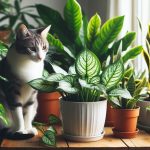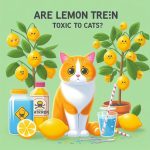Fiddle leaf figs are a popular choice for indoor plants, but “are fiddle leaf figs toxic to cats?” many cat owners may not be aware of the potential danger. They pose to their feline friends. Understanding the toxicity of fiddle leaf figs to cats is crucial for creating a safe environment at home. In this blog post, we will explore the common symptoms of feline poisoning. The risks associated with ingesting fiddle leaf fig leaves, and ways to keep these plants out of reach of pets. It’s important to recognize the importance of pet safety and to consider safe alternatives for cat-friendly indoor plants.
The Toxicity of Fiddle Leaf Figs to Cats
Fiddle leaf figs are a popular choice for indoor plants due to their attractive, broad leaves and air-purifying qualities. However, it’s important to be aware that fiddle leaf figs can be toxic to cats if ingested. Here’s what you need to know about the potential danger of fiddle leaf figs to your feline friends:
Toxic Components: Fiddle leaf figs contain toxic compounds, including insoluble calcium oxalates, which are harmful to cats if they chew or ingest the leaves. These oxalate crystals can cause oral and gastrointestinal irritation when in contact with a cat’s mouth, throat, or stomach.
Common Symptoms: If a cat has ingested parts of a fiddle leaf fig, they may exhibit symptoms such as drooling, difficulty swallowing, vomiting, and oral irritation. In severe cases, ingestion can lead to swelling of the upper airway, which requires immediate veterinary attention.
Preventive Measures: It’s crucial to keep fiddle leaf figs out of reach of cats to prevent accidental ingestion. Placing the plant in a location that is inaccessible to cats or using deterrents can help minimize the risk of toxicity.
Attention to Detail: Pet owners should be mindful of the leaves or fallen plant debris within the cat’s environment, as even small amounts can pose a danger.
By understanding the toxicity of fiddle leaf figs to cats. Pet owners can take proactive steps to create a safe and cat-friendly indoor environment. If you suspect that your cat has ingested fiddle leaf fig leaves or is displaying any concerning symptoms. Seek immediate veterinary care to ensure their well-being.
Remember, ensuring the safety of our beloved feline companions is paramount when introducing any new plants into our homes.
Common Symptoms of Feline Poisoning
If you suspect that your cat has ingested fiddle leaf figs. it’s crucial to be aware of the common symptoms of feline poisoning. Keep an eye out for the following signs:
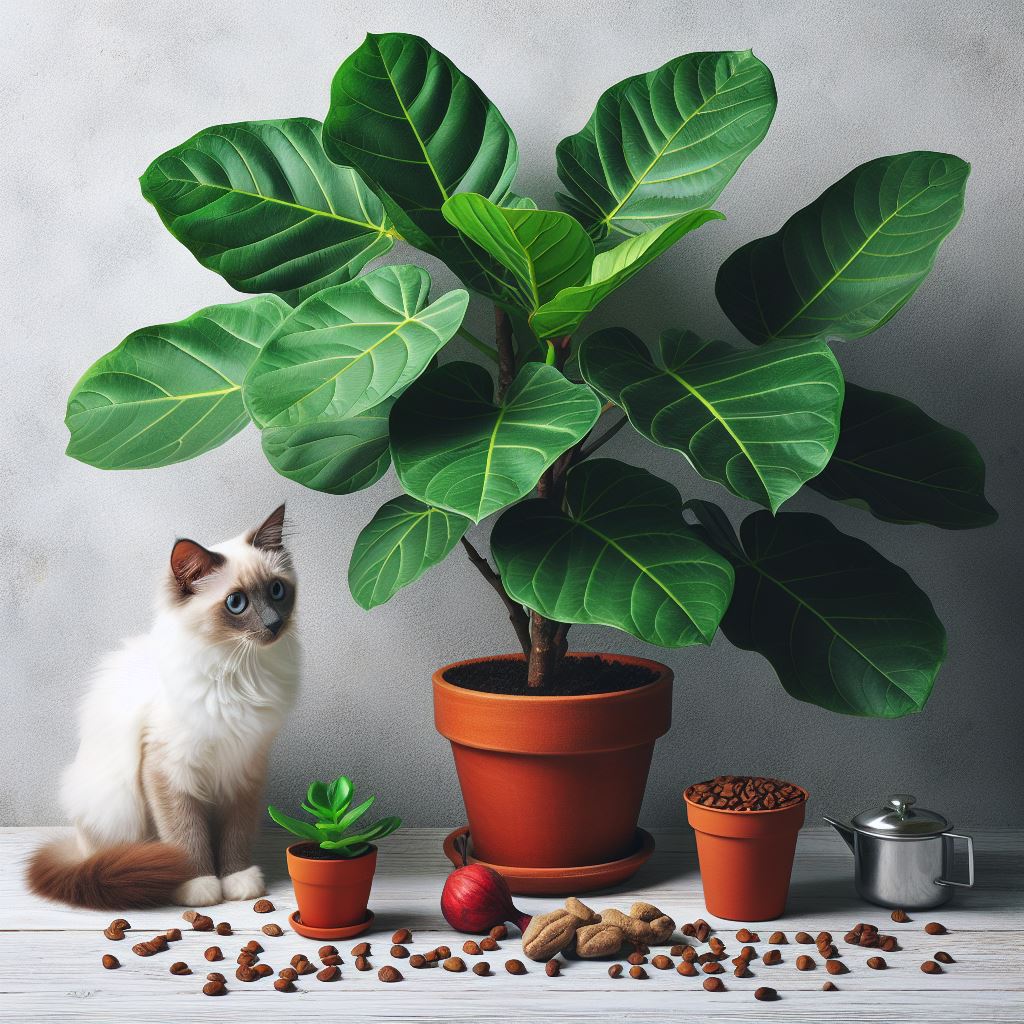
- Vomiting and Diarrhea: Cats may exhibit gastrointestinal distress, such as vomiting or diarrhea, after consuming fiddle leaf figs. Persistent vomiting or diarrhea should prompt immediate veterinary attention.
- Loss of Appetite: A sudden lack of interest in food can indicate potential poisoning. Monitor your cat’s eating habits and consult a veterinarian if you notice a significant decrease in appetite.
- Lethargy: Unusual tiredness or lethargy in your cat could be a red flag. If your feline companion appears unusually sluggish or unresponsive, it’s essential to seek prompt medical evaluation.
- Drooling and Pawing at the Mouth: Excessive drooling or pawing at the mouth can be indicative of oral irritation or discomfort caused by the ingestion of toxic substances.
- Difficulty Breathing: In severe cases of poisoning, cats may experience difficulty breathing. Rapid or labored breathing should be treated as a medical emergency.
- Behavioral Changes: Watch for any abnormal behavior, such as agitation, restlessness, or confusion, which could signal a toxic reaction.
If you observe any of these symptoms or suspect that your cat has come into contact with fiddle leaf figs. Seek guidance from a veterinarian immediately. Remember that swift action is crucial in ensuring the well-being of your feline companion.
Keeping Fiddle Leaf Figs Out of Reach
When it comes to keeping your feline friends safe from the potential dangers of fiddle leaf figs, prevention is key. Here are some effective ways to ensure that your cats cannot access these toxic plants:
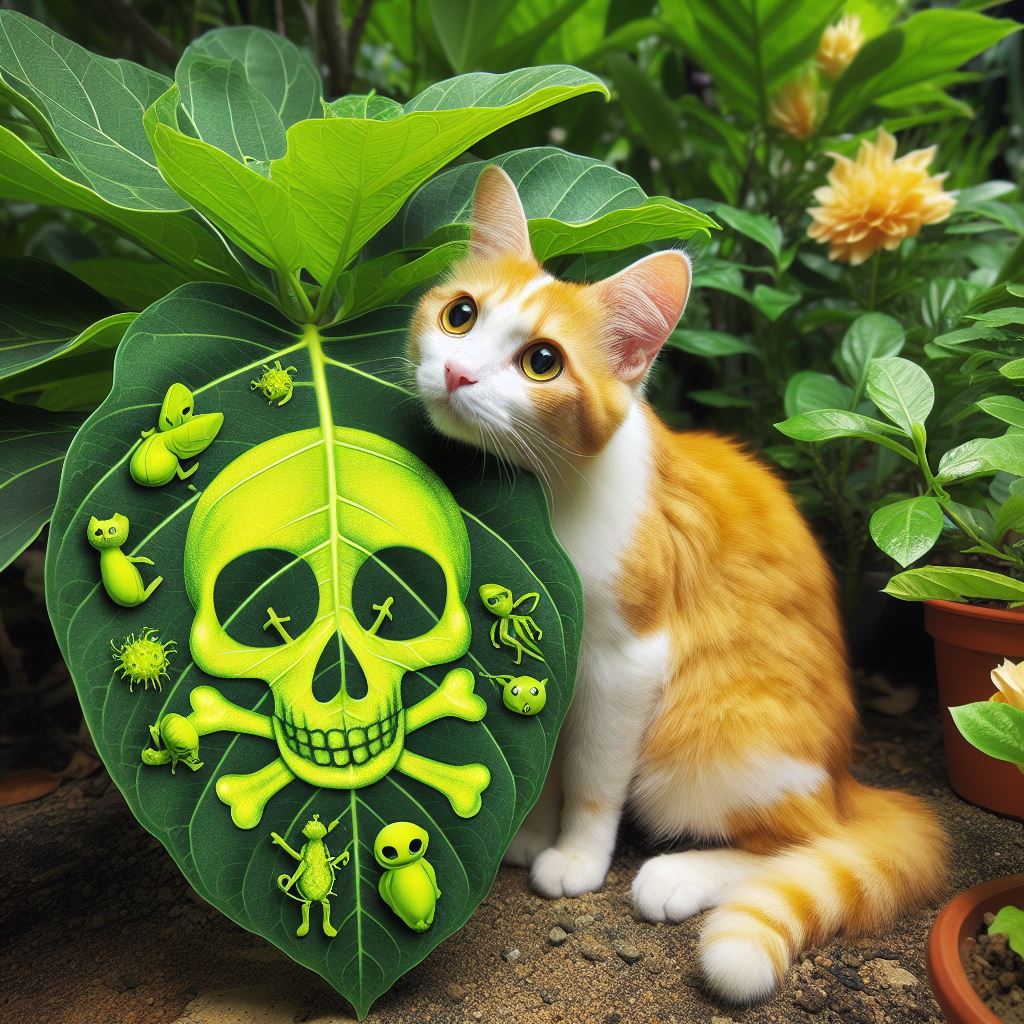
- Elevate the plants: Place your fiddle leaf figs on high shelves or plant stands that are out of your cat’s reach. This will prevent them from being able to nibble on the leaves.
- Use hanging baskets: Hanging your fiddle leaf figs in baskets from the ceiling can also be an effective way to keep them out of reach of curious cats.
- Create physical barriers: Consider using indoor barriers like baby gates or fencing to restrict access to certain areas where the plants are located.
- Spray deterrents: Some pet-safe sprays are designed to deter cats from going near certain areas or objects. Spraying these around your fiddle leaf figs can help discourage your cats from approaching them.
By implementing these strategies, you can significantly reduce the risk of your cats coming into contact with fiddle leaf figs. Thereby minimizing the chance of toxicity. It’s important to remember that even if a plant is out of reach. it’s still crucial to be aware of any fallen leaves or other plant parts that may be accessible to your cats.
Remember, prevention is always better than dealing with the consequences of fiddle leaf figs toxic to cats.
Safe Alternatives for Cat-Friendly Indoor Plants
When considering indoor plants that are safe for your feline friends. it’s essential to choose options that will not pose a threat to their health. Here are some safe alternatives to fiddle leaf figs for cat-friendly indoor plants:
Spider Plants: These are non-toxic to cats and can be grown in a hanging basket or on a high shelf, out of reach of curious felines.
Boston Ferns: Known for their air-purifying qualities, Boston ferns are safe for cats and can thrive in a hanging pot.
Areca Palms: These palms are non-toxic and add a tropical touch to your home. Placing them in an elevated spot can prevent access by cats.
Calathea Plants: With their vibrant, patterned leaves, calathea plants are safe for cats and can be placed in well-lit areas.
Bamboo Palm: Safe for cats and relatively low maintenance, bamboo palms can be a great addition to any cat-friendly home.
By opting for these cat-friendly indoor plants. You can create a nurturing environment for both your plants and your feline companions without worrying. about the potential toxicity of fiddle leaf figs. It’s important to research the specific care requirements for each plant and ensure they are placed in locations where your cats cannot easily access them.
Remember! providing safe alternatives for your indoor greenery not only promotes a healthy atmosphere for your cats but also adds a touch of nature to your home.
Creating a Cat-Friendly Environment at Home
Creating a cat-friendly environment at home is crucial for ensuring. The safety and well-being of your feline companions. Especially when you have plants like fiddle leaf figs that can be toxic to cats. Here are some tips for fostering a cat-friendly space:
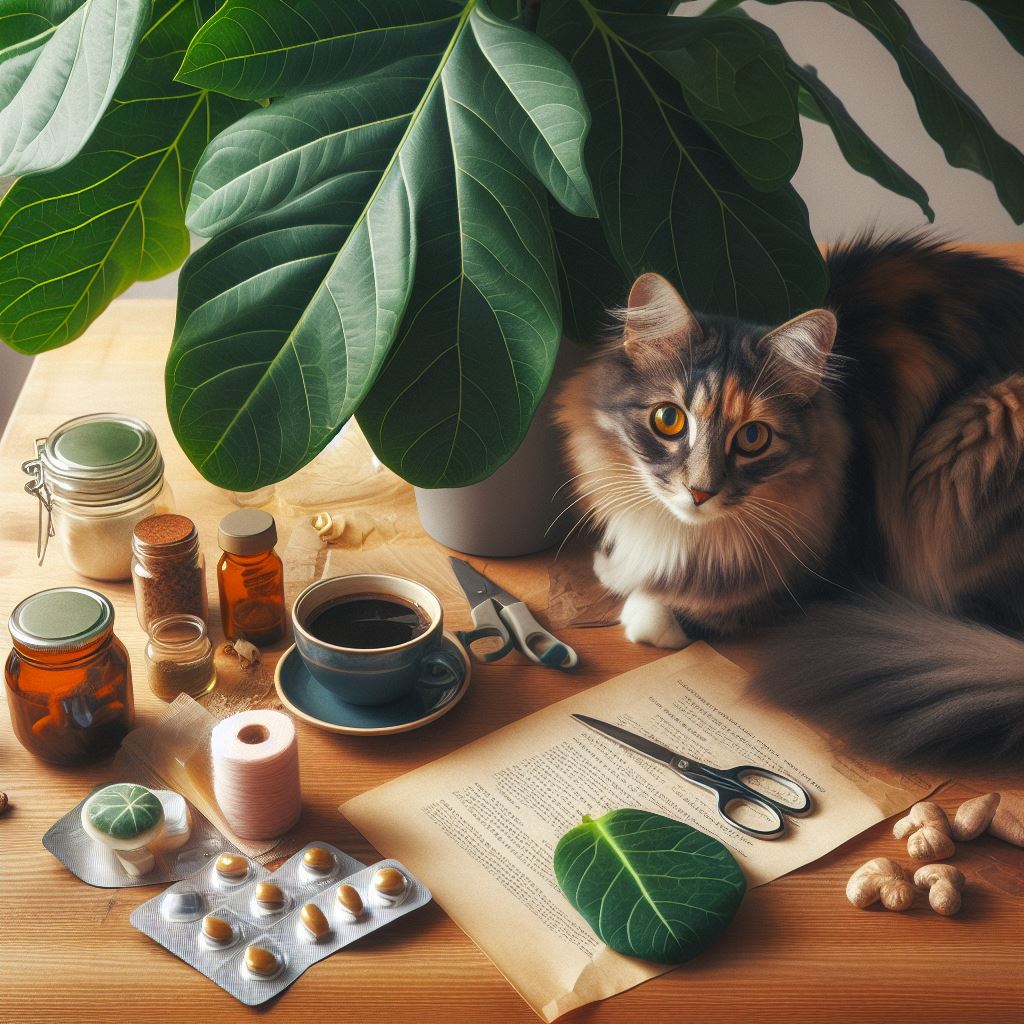
Plant Selection: Opt for cat-friendly indoor plants that pose no harm to your feline friends. Some safe options include spider plants, Boston ferns, and parlor palms. Researching and choosing non-toxic plants is essential to prevent any potential incidents of poisoning.
Secure Plant Placement: Position indoor plants in areas that are inaccessible to cats. Consider hanging planters or placing plants on tall shelves to keep them out of reach. This not only protects your cats but also safeguards your plants from curious paw interactions.
Designated Cat Zones: Dedicate specific areas in your home to cater to your cats’ needs, such as cozy beds, scratching posts, and interactive toys. By providing a designated space for your cats, they are less likely to show interest in exploring potentially harmful plants like fiddle leaf figs.
Supervision and Engagement: Regularly interact and engage with your cats to keep them stimulated and less likely to explore areas they shouldn’t. Playing with them, providing climbing structures, and creating a stimulating environment can divert their attention from plants that may be hazardous to them.
By implementing these strategies, you can cultivate a living environment that is both enriching for your cats and free from potential dangers. Such as fiddle leaf figs toxic to cats.
Consulting a Veterinarian for Concerns
If you suspect that your cat has ingested fiddle leaf fig leaves or is showing any symptoms of toxicity. Consulting a veterinarian should be your immediate course of action. It’s crucial to seek professional medical advice to ensure your feline friend’s well-being. Here are a few important points to consider:
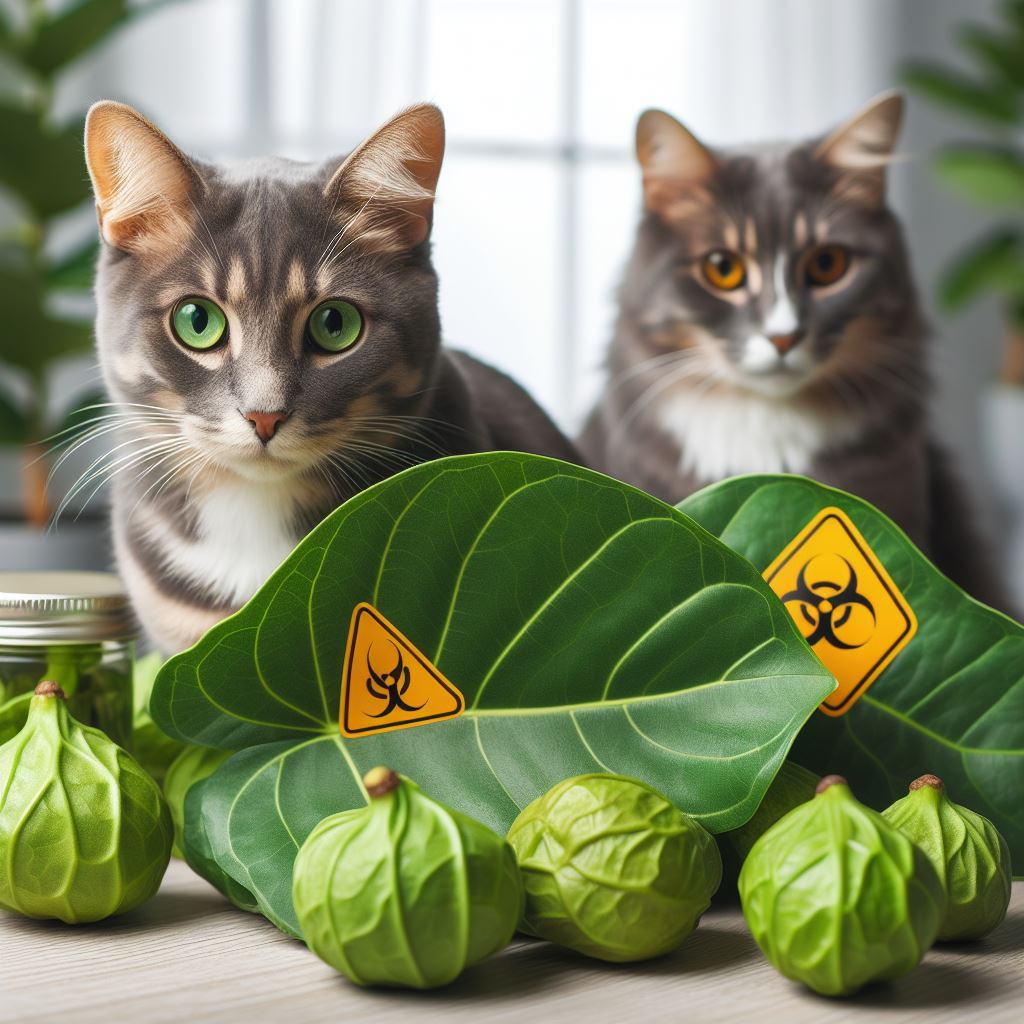
Immediate Action: Contact your veterinarian as soon as you notice any unusual behavior in your cat, such as vomiting, drooling, lethargy, or loss of appetite after potential exposure to fiddle leaf figs. Time is of the essence, so don’t hesitate to seek help.
Provide Details: When consulting the veterinarian, provide specific details about the potential exposure, the symptoms observed, and any necessary information about your cat’s health history. This information will assist the veterinarian in making an accurate diagnosis.
Diagnostic Procedures: The veterinarian may conduct diagnostic tests to assess the extent of feline poisoning. These tests may include blood work, urinalysis, or imaging studies, depending on the symptoms exhibited.
Treatment Plan: Based on the severity of the poisoning, the veterinarian will recommend an appropriate treatment plan. This may involve supportive care, such as intravenous fluids, medication to control symptoms, or, in severe cases, hospitalization for close monitoring.
Preventive Measures: Furthermore, the veterinarian can offer guidance on preventing future incidents of feline poisoning, including tips on keeping fiddle leaf figs out of reach and suggesting cat-friendly alternative plants for your home.
Consulting a veterinarian is pivotal in addressing any concerns related to fiddle leaf figs toxic to cats. it reflects a responsible approach toward ensuring the safety and well-being of your beloved pet.
Potential Risks of Ingesting Fiddle Leaf Fig Leaves
Fiddle leaf figs are popular indoor plants, but they can pose potential risks if ingested by cats. It’s important to be aware of the dangers. Associated with feline ingestion of fiddle leaf fig leaves to ensure the safety of your pets.
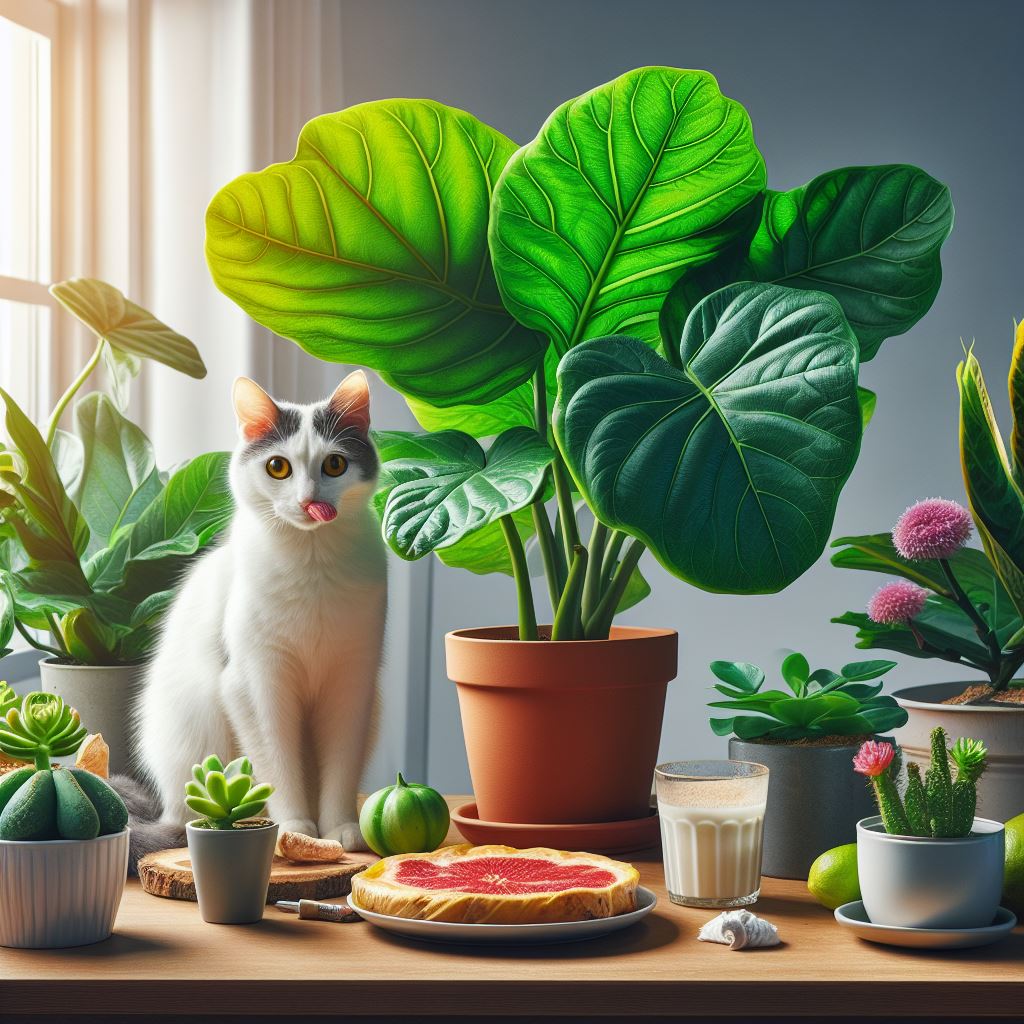
Risks to Cats:
- Toxic Compounds: Fiddle leaf figs contain toxic compounds such as insoluble calcium oxalates, which can cause oral and gastrointestinal irritation when consumed by cats.
- Symptoms: If a cat ingests fiddle leaf fig leaves, they may exhibit symptoms like drooling, vomiting, difficulty swallowing, and oral discomfort. In severe cases, it can lead to swelling of the oral cavity and upper airway, posing a serious threat to the cat’s health.
- Health Complications: Ingestion of fiddle leaf fig leaves can lead to health complications in cats, and immediate veterinary attention is crucial to address any potential toxicity.
Comparison Table – Toxic vs. Non-Toxic Plants:
| Aspect | Fiddle Leaf Figs | Cat-Friendly Alternatives |
|---|---|---|
| Toxicity | Toxic to cats | Non-toxic |
| Potential Risks | Oral and GI irritation, possible swelling | Generally safe for cats |
| Symptoms | Oral discomfort, drooling, vomiting | Safe for cats to ingest |
| Veterinary Care | Immediate attention needed | Low risk, minor concerns |
Being aware of the potential risks of fiddle leaf fig ingestion is essential for responsible pet ownership. By understanding the dangers associated with these plants. You can take proactive measures to ensure a safe environment for your feline companions.
Hidden Dangers of Fiddle Leaf Fig Soil
When it comes to fiddle leaf figs, the focus is usually on the plant itself, but the soil also poses potential risks. Especially to curious cats. Here are some hidden dangers of fiddle leaf fig soil to be mindful of:
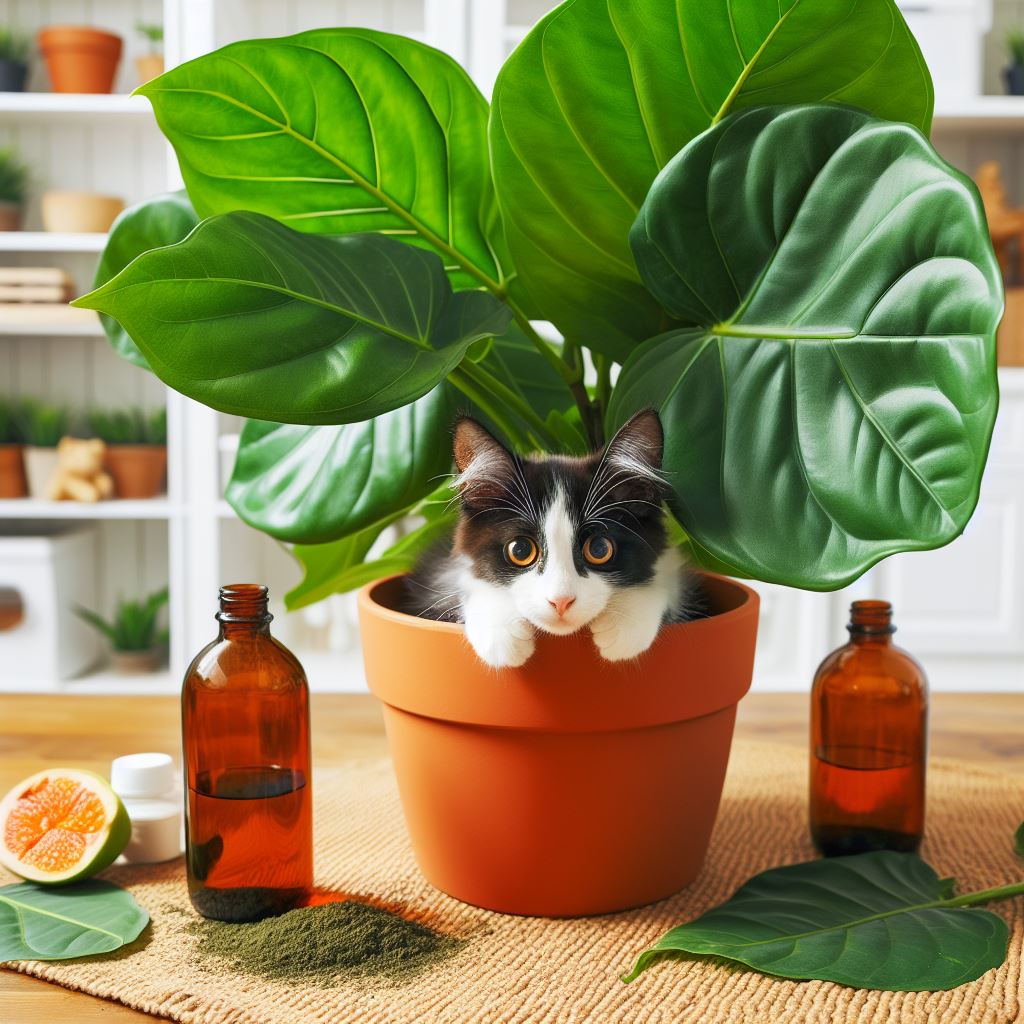
Toxic Substances: Fiddle leaf fig soil may contain chemical fertilizers, pesticides, or other additives that can be harmful if ingested by cats.
Compaction Issues: The soil in fiddle leaf fig pots can become compacted over time, potentially leading to waterlogging and creating a breeding ground for bacteria, mold, and other harmful microorganisms that cats could come into contact with.
Choking Hazard: Some potting soils contain small pellets or beads that can pose a choking hazard to cats if they explore the soil.
It’s important to note that these dangers. are not only a concern if cats ingest the soil directly but also if they come into contact with their paws. and then groom themselves. Being aware of these hidden dangers. Can help pet owners take necessary precautions to ensure. the safety of their feline companions.
By choosing safer alternatives for potting soil. and regularly monitoring the condition of the soil. Pet owners can significantly reduce the risks associated with fiddle leaf fig soil and create a safer environment for their cats.
Considering the hidden dangers of fiddle leaf fig soil. it’s crucial for pet owners to prioritize the well-being of their feline friends and take proactive steps to mitigate potential risks.
Remember! a safe and cat-friendly home is the cornerstone of a healthy and happy life for both pets and their owners.
Training Cats to Avoid Fiddle Leaf Figs
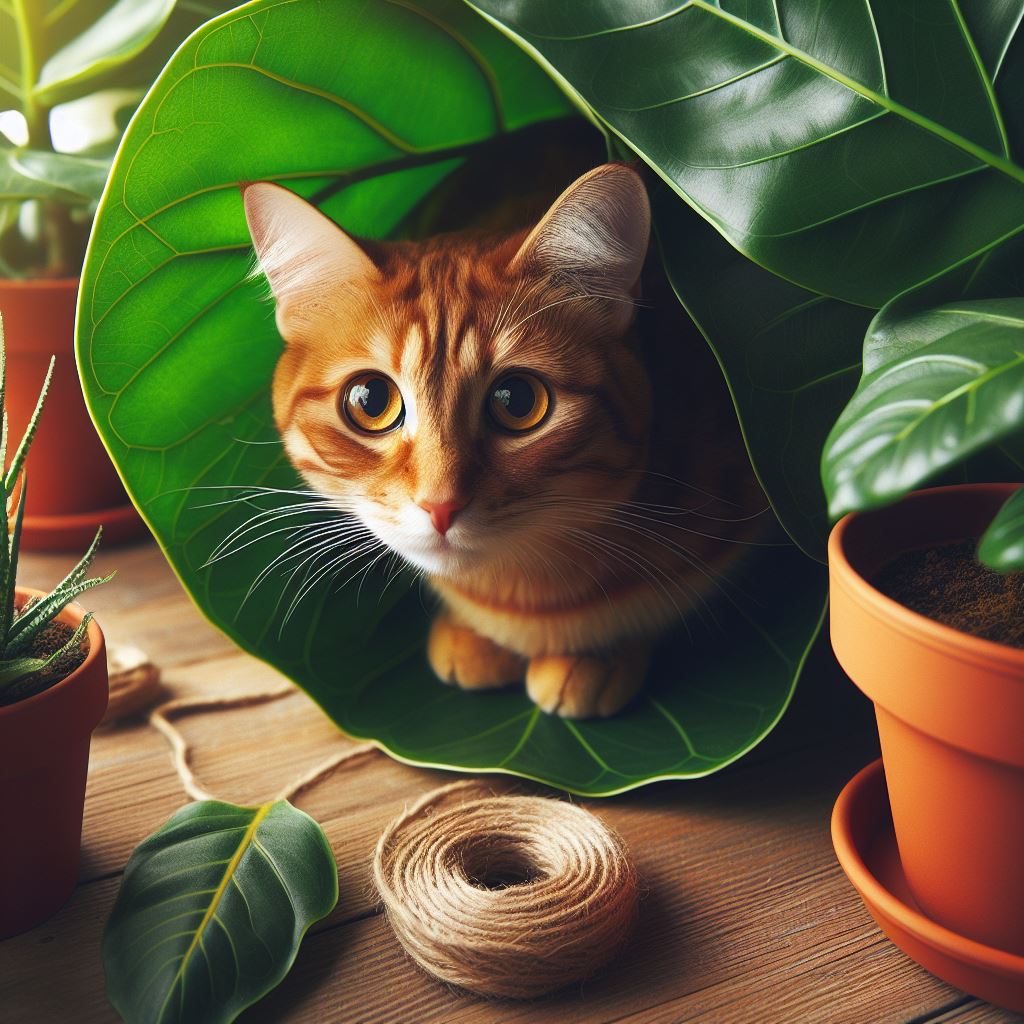
Training your cat to avoid fiddle leaf figs can help prevent potential exposure to the toxicity of these plants. Here are some effective methods for training your feline friend:
Positive Reinforcement: Use positive reinforcement techniques such as treats and praise when your cat avoids the fiddle leaf fig. This will create a positive association with staying away from the plant.
Deterrents: Consider using natural deterrents like citrus spray or double-sided tape around the base of the plant. Cats often dislike the scent of citrus, and the texture of double-sided tape can be off-putting to them.
Provide Alternative Spaces: Create dedicated areas for your cat to explore and play, away from the fiddle leaf fig. Interactive toys and scratching posts can redirect their attention.
Consistency: Be consistent with training and reinforcement. Cats respond well to routine, so consistently rewarding their avoidance of the plant will reinforce the desired behavior.
Supervision: When introducing the fiddle leaf fig to your home, closely supervise your cat’s behavior around the plant. This will allow you to immediately redirect them and provide positive reinforcement when they steer clear of it.
By implementing these training methods, you can help keep your cat safe from the potential dangers of fiddle leaf figs. It’s essential to remember that patience and consistency. are key when training your cat to avoid certain areas or objects in your home.
Remember to consult with a veterinarian or animal behaviorist for additional. guidance on training techniques and to address any concerns about feline exposure to plants like fiddle leaf figs toxic to cats.
Recognizing the Importance of Pet Safety
When it comes to owning indoor plants. understanding the potential dangers they pose to pets is crucial for ensuring their safety and well-being. Recognizing the importance of pet safety. especially in homes with feline companions, can significantly reduce the risk of poisoning and other health issues related to toxic plants like fiddle leaf figs.
By acknowledging the significance of pet safety. pet owners can take proactive measures to create a secure environment for their cats and other pets. This includes being mindful of the plants they bring into their homes and taking necessary precautions to prevent accidental ingestion or contact with toxic foliage or soil.
Key Points to Consider
- Awareness: Stay informed about the toxicity of common indoor plants, including fiddle leaf figs, to cats.
- Prevention: Take proactive steps to keep toxic plants out of reach of feline companions.
- Education: Educate yourself and others in the household about the potential risks associated with specific plants.
- Vigilance: Remain attentive to any changes in your pet’s behavior or health that may indicate ingestion of toxic plants.
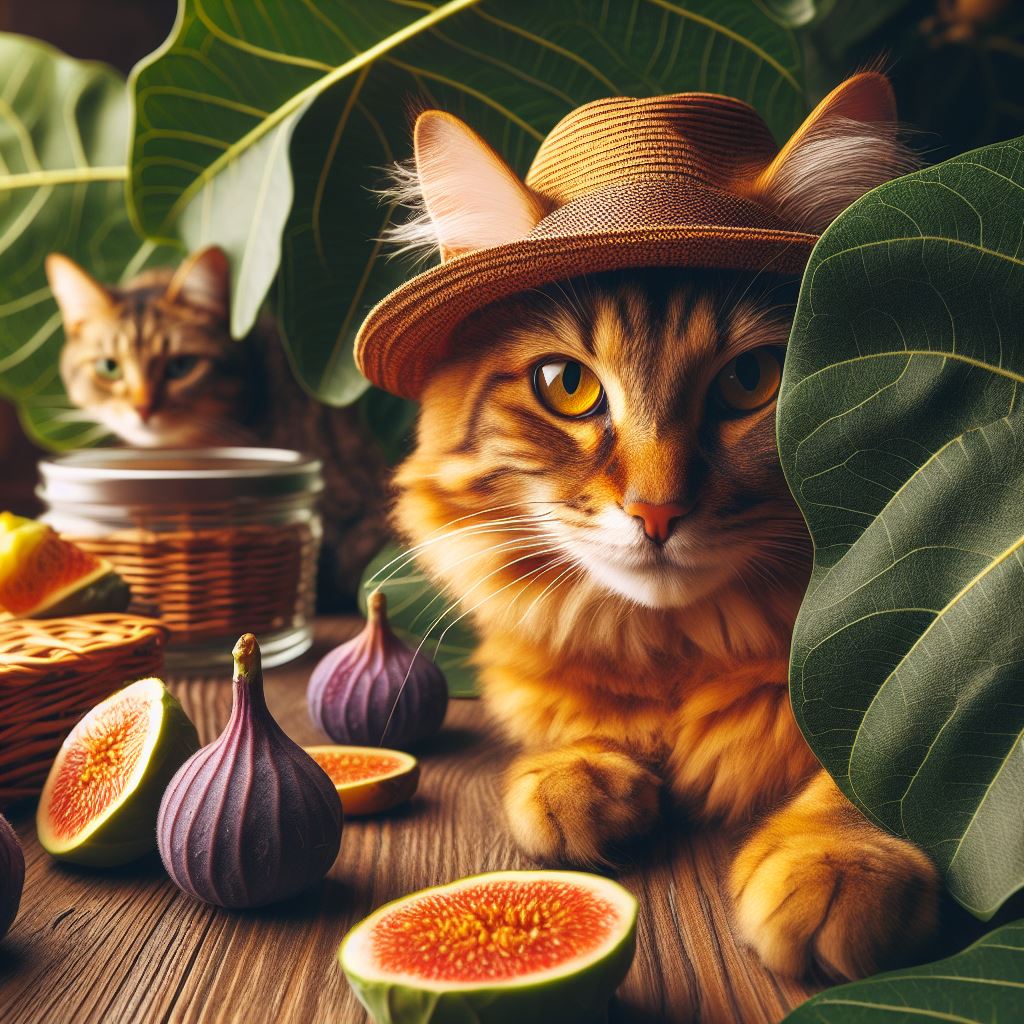
By recognizing the importance of pet safety and implementing appropriate measures, pet owners can minimize the risk of accidental poisoning and create a safe and pet-friendly living space for their beloved animals.
Frequently Asked Questions
Are fiddle leaf figs toxic to cats?
Yes, fiddle leaf figs are toxic to cats. The leaves and sap contain a toxic substance that can cause vomiting. excessive drooling, oral irritation, and difficulty swallowing when ingested by cats. It’s important to keep fiddle leaf figs out of reach of feline friends to prevent accidental ingestion and potential harm.
What are the symptoms of fiddle leaf fig poisoning in cats?
The symptoms of fiddle leaf fig poisoning in cats include vomiting, excessive drooling, oral irritation, difficulty swallowing. Lack of appetite, and lethargy. If you suspect that your cat has ingested any part of a fiddle leaf fig, it’s crucial to seek immediate veterinary attention.
How can I protect my cat from fiddle leaf fig poisoning?
To protect your cat from fiddle leaf fig poisoning. Ensure that the plant is kept in a location that is inaccessible to your cat. Consider placing the plant in a hanging basket or in a room that your cat does not have access to. Additionally, closely monitor your cat’s behavior around plants and provide safe alternatives for your cat to nibble on, such as cat grass.
Are there safe alternatives to fiddle leaf figs for cat-friendly homes?
Yes, there are several cat-friendly houseplants that you can consider as alternatives to fiddle leaf figs. Some safe options include spider plants, Boston ferns, and parlor palms. These plants are non-toxic to cats and provide a green and leafy aesthetic for your home.
What should I do if my cat ingests part of a fiddle leaf fig?
If your cat ingests part of a fiddle leaf fig, seek immediate veterinary care. Contact your veterinarian or an emergency animal hospital and provide them with details about the plant, the amount ingested, and any symptoms your cat may be experiencing. Prompt medical attention is crucial in cases of plant poisoning.
| Aspect | Details |
|---|---|
| Toxic Components | Fiddle Leaf Fig (Ficus lyrata) contains sap with compounds like ficin, which may irritate a cat’s skin. |
| Potential Risks | Ingesting leaves or sap can lead to symptoms like drooling, vomiting, and digestive discomfort in cats. |
| Symptoms of Poisoning | Watch for signs such as lethargy, loss of appetite, and changes in behavior. |
| Preventive Measures | Keep Fiddle Leaf Figs out of reach, opting for pet-friendly plants. Educate yourself on toxic plants. |
| Safe Interaction | Monitor your cat around the plant, and seek veterinary help if any suspicious symptoms arise. |
| Emergency Actions | If ingestion occurs, contact a veterinarian immediately, providing details on symptoms and plant exposure. |
| Alternatives | Choose non-toxic plants like spider plants or cat grass to create a safe environment for your feline friend. |
This table offers detailed information regarding the potential toxicity of Fiddle Leaf Figs to cats, including toxic components, potential risks, symptoms of poisoning, preventive measures, safe interaction practices, emergency actions, and alternative cat-friendly plants. Always consult with a veterinarian for personalized advice concerning your cat’s well-being.
Are Lemon Trees Toxic To Cats: Understanding the Risks!
Read More Now..

